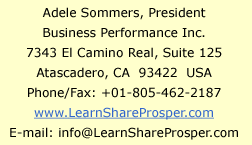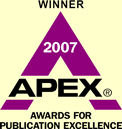
|
|
|
|
|
|
|
|
|
|
|
|
|
|
|
|
|
In a hurry? Learn in small bites! Sign up for my free, 7-day e-mail mini-course, and I'll dish up the basics in just one week!
|
|
|

|
Managing
Project Risks (Part 4): A Simple Risk Mitigation Process Getting a handle on project risks is a slippery job, but well worth the effort if you and your project team desire to sleep more soundly at night. In Part 2 of this series, we identified various risks related to choosing, estimating, and staffing your projects. In Part 3, we assessed the potential adverse effects of those risks on the project cost, schedule, quality, and features. Following assessment, the mitigation phase involves brainstorming ways to avoid, eliminate, work around, or otherwise manage each identified risk. This article (Part 4 of the series) takes you through a simple, four-step risk management process. The results can help you and your team decide whether or not to take on a project, and can aid in pinpointing the most effective risk management techniques to use. Risk Assessment Review In Part 3, we discussed an example
in which your family has approached you Since you don’t believe you have nearly enough time to complete the project, during your risk assessment, you labeled one of the risks “Too Many Features/Too Little Time.” This means the project requirements are too numerous, too complex, or both, given the time available. This risk also scored high in terms of its potential negative impact on cost, schedule, quality, and features. Mitigating the Risks You’ve Assessed — Can You Do It Successfully? Once you have a list of assessed risks, you can begin brainstorming a variety of ways to avoid, minimize, or manage them. This is a quick and simple process for doing so. 1. Consider whether you can completely avoid or eliminate each risk. If your risk involves not having enough time to incorporate certain requested features, is it possible to agree on removing the features from the requirements list entirely? Record any ideas for avoiding the risk altogether. Example. With the kitchen redecorating job, you might consider these options:
2. If you can't avoid a risk, brainstorm risk management alternatives.
Example. With the kitchen redecorating job, you could:
3. Identify your “do-nothing” and “next-to-nothing” alternatives.
Example. Instead of the kitchen redecorating job, why not:
4. Give each risk alternative a “risk reduction likelihood” score or rating. If you want to move forward with the project or solution, but can’t find a way to avoid or eliminate the risk, you can weigh the relative merits of each alternative you brainstormed in #2 above.
For instance, a High Likelihood of reducing the impact might be a 9, a Medium Likelihood a 5, a Low Likelihood a 1, and No Likelihood a zero, with a different value possible for each of the four key areas. By adding up the values for each alternative, you'll have a rough score for each that indicates which alternatives seem to be the best candidates for minimizing the risk — the higher the score, the better. You also might consider whether to combine alternatives. Using two or more together might help reduce the risk in a complementary way. Example: Your family wishes to move ahead with the project with all of the current requirements. After scoring and comparing the alternatives, it appears that seeking professionals to do the work might best minimize the risk. If that’s not possible, your family will do the work with simpler materials and methods and extensive help from friends. Either way, you can always set up a second kitchen as a contingency plan. What’s the Plan? When you're finished, you’ll have a risk management plan consisting of analyzed risks with a ranked list of alternatives for handling each one. And even if you decide not to take on the project you are evaluating, you will have used 20:20 foresight to make that decision instead of the 20:20 hindsight that’s usually required to find out the hard way — after the fact! To download the related worksheet, click here. ~~~~~~~~~~~ Adele Sommers, Ph.D. is author of “Straight Talk on Boosting Business Performance: 12 Ways to Profit from Hidden Potential.” To learn more about her book and sign up for more free tips like these, visit her site at www.LearnShareProsper.com This article may be distributed freely on your Web
site, as long as this entire article, including the links and full
“About the Author” section, are unchanged. Please send
a copy of, or link to, your “reprint” to Adele@LearnShareProsper.com. Copyright 2005 Adele Sommers, The Enterprise Prosperity
Guild, All Rights Reserved.
966 words |
||
|
|
|
|
|
Receive “just in time” tips for tuning up your business performance, sent to your in-box every 2 weeks! Yes! Send FREE Boosting Business Performance advice!
|
|
Explore the award-winning “Straight
Talk” series by Adele Sommers, Ph.D.
|
Home | Start
Now! | Free Articles | Audio Classes
| Products & Tools | Recommendations
| Mentoring Program | About
Us | Site Index | Privacy
Policy | Terms & Conditions of Use
| Newsletter Sign-up | Newsletter Index | Free 7-Day Minicourse | Free Report |

![]()




 about
redecorating your kitchen because your relatives are coming for
a family reunion the week after next. Your family has many items
on its “wish list” (new paint treatment, resurfacing the
cabinetry, laying new tile, and installing new crown molding). All
of this must be completed in the next two weekends, which gives
you only four days!
about
redecorating your kitchen because your relatives are coming for
a family reunion the week after next. Your family has many items
on its “wish list” (new paint treatment, resurfacing the
cabinetry, laying new tile, and installing new crown molding). All
of this must be completed in the next two weekends, which gives
you only four days! Alternatives
are ways of mitigating the risk — from the simplest ideas to
more sophisticated solutions. For the Features-versus-Time risk,
one strategy could be to negotiate a way to phase in the features
over time. Another might entail engaging more people or resources
to address the features, if feasible. In some situations, you might
even be able to buy insurance to mitigate a risk.
Alternatives
are ways of mitigating the risk — from the simplest ideas to
more sophisticated solutions. For the Features-versus-Time risk,
one strategy could be to negotiate a way to phase in the features
over time. Another might entail engaging more people or resources
to address the features, if feasible. In some situations, you might
even be able to buy insurance to mitigate a risk. These
are the options that would remain available to you if you did not
pursue the project or solution you're considering. “Do-nothing”
could mean the status quo, for example, and “Next-to-nothing”
might denote an option that already exists but has been ignored.
These will help you remain clear about whether you must do something,
and what your fallback position is if you can’t do anything.
These
are the options that would remain available to you if you did not
pursue the project or solution you're considering. “Do-nothing”
could mean the status quo, for example, and “Next-to-nothing”
might denote an option that already exists but has been ignored.
These will help you remain clear about whether you must do something,
and what your fallback position is if you can’t do anything.
 Similar
to the Assessment Phase, you can assign relevant values to each
of your alternatives. In this case, these values represent the likelihood
that each alternative can significantly reduce the negative impact
of the risk on the four key factors: cost, schedule, quality, and
features.
Similar
to the Assessment Phase, you can assign relevant values to each
of your alternatives. In this case, these values represent the likelihood
that each alternative can significantly reduce the negative impact
of the risk on the four key factors: cost, schedule, quality, and
features. 

